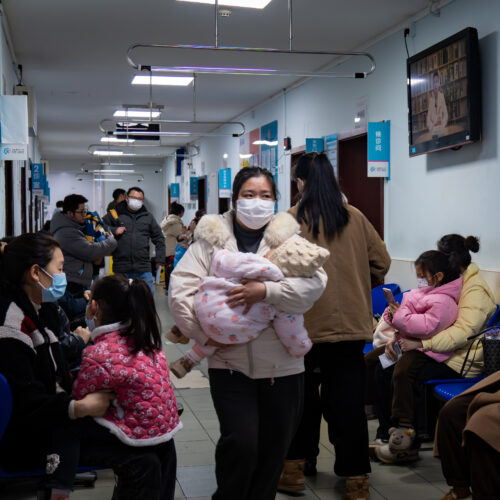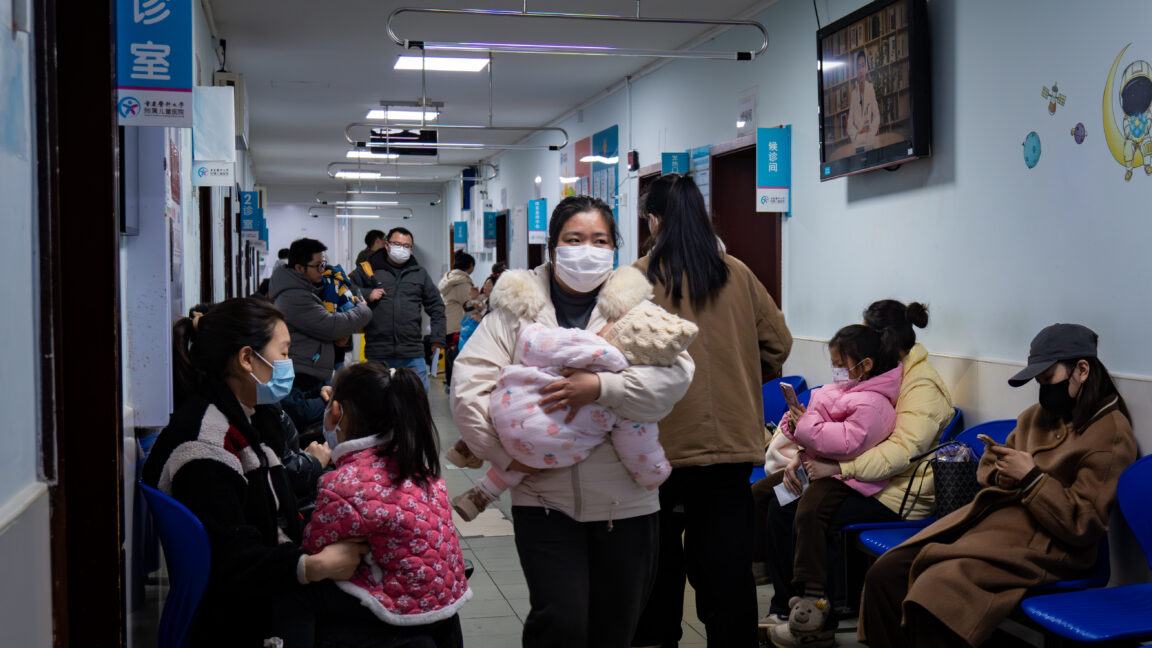U.S. Family Infected With Airborne Fungal Disease After Touring Bat-Filled Caves

For fans of The Last of Us season 2, this real-life fungal outbreak might feel uncomfortably familiar.

There's a good chance you've seen headlines about HMPV recently, with some touting "what you need to know" about the virus, aka human metapneumovirus. The answer is: not much.
It's a common, usually mild respiratory virus that circulates every year, blending into the throng of other seasonal respiratory illnesses that are often indistinguishable from one another. (The pack includes influenza virus, respiratory syncytial virus (RSV), adenovirus, parainfluenza virus, common human coronaviruses, bocavirus, rhinovirus, enteroviruses, and Mycoplasma pneumoniae, among others.) HMPV is in the same family of viruses as RSV.
As one viral disease epidemiologist at the US Centers for Disease Control summarized in 2016, it's usually "clinically indistinguishable" from other bog-standard respiratory illnesses, like seasonal flu, that cause cough, fever, and nasal congestion. For most, the infection is crummy but not worth a visit to a doctor. As such, testing for it is limited. But, like other common respiratory infections, it can be dangerous for children under age 5, older adults, and those with compromised immune systems. It was first identified in 2001, but it has likely been circulating since at least 1958.


© Getty | Li Hongbo
Iuliia Burmistrova/Getty Images
Norovirus, commonly called the stomach flu or the 24-hour bug, is on the rise across the US this winter.
And Norovirus outbreaks — which are most common from November to April — have reached one of their highest levels from any time in the past 12 years, according to data from the Centers for Disease Control and Prevention.
In its most recent data available, the CDC reported 91 norovirus outbreaks across the US for the first week of December — the highest number of outbreaks for the same week since 2012, and the fourth-highest number of outbreaks recorded in any week of the year since 2012.
The CDC defines an outbreak as "an occurrence of two or more similar illnesses resulting from a common exposure that is either suspected or laboratory-confirmed to be caused by norovirus."
Here's what you need to know about norovirus:
Norovirus presents itself much like food poisoning — with a rapid onset of nausea, diarrhea, vomiting, and stomach pain that generally lasts between one and three days.
But there are a few key differences between the two.
How it spreads: Once someone becomes exposed to norovirus — which is spread through direct contact and can linger on surfaces for days or even weeks — they can become infected within a day or two.
The symptoms of food poisoning, on the other hand, will typically present much faster than that, in a matter of hours, said Dr. Shruti Gohil, a professor and the associate medical director of epidemiology and infection prevention at the University of California, Irvine's School of Medicine.
How to treat: Though the treatments for both might be similar — drinking water, eating bland foods, taking anti-diarrheal medication — Gohil told BI that when in doubt, you should act as if you have norovirus.
That's because of how highly contagious norovirus is compared to food poisoning. Norovirus is one of the most contagious infections we know of, and to help prevent its spread, you need to be vigilant about washing your hands and disinfecting surfaces, she said.
The most important thing to do if you're experiencing symptoms is to stay hydrated. When you're losing so much fluid, particularly if you can't keep any fluids down, there's a risk of dehydration, which can become life-threatening, Gohil said.
Look for these symptoms as warning flags: If you reach the point of dizziness or light-headedness, Gohil said, then you may be dangerously dehydrated, and that's when you need to get yourself to an ER. When you get a headache, that's an early warning sign of dehydration and an indicator that you need to increase your fluid intake, she added.
People who are very young, very old, or immunocompromised can have infections that last longer, and they may be at higher risk of dehydration.
Pay special attention: Gohil also mentioned a few signs of dehydration to look out for in people who can't speak for themselves, like babies and nonverbal seniors. And that's if they cannot form tears, if their mouth looks dry, if they're despondent, or if they're not really reacting to you.
In terms of the total number of norovirus outbreaks, Gohil said it's pretty bad this year.
One of the main reasons for that, she said, is that more and more people are gathered together for the holiday season this year than they did in the last few years when COVID-19 was a more immediate concern.
"We've got more outbreaks, people are unmasked, people are engaging with each other, they're not cleaning their hands, clearly," Gohil said. "Cleaning and disinfection and all that stuff is down. And we need to shore those practices back up."
Before the pandemic, there were also years when norovirus outbreaks spiked just like they are now, and fluctuations like this are normal, Gohil said.
Everyone has an important role to play in helping prevent the spread of norovirus, Gohil said.
"You could literally, just by being careful yourself, save other people's lives indirectly. That's really, really important for people to understand, that you live in a community, " she said, "and that you have a responsibility to care, and to keep yourself clean, and keep others safe."
In other words, wash your hands.